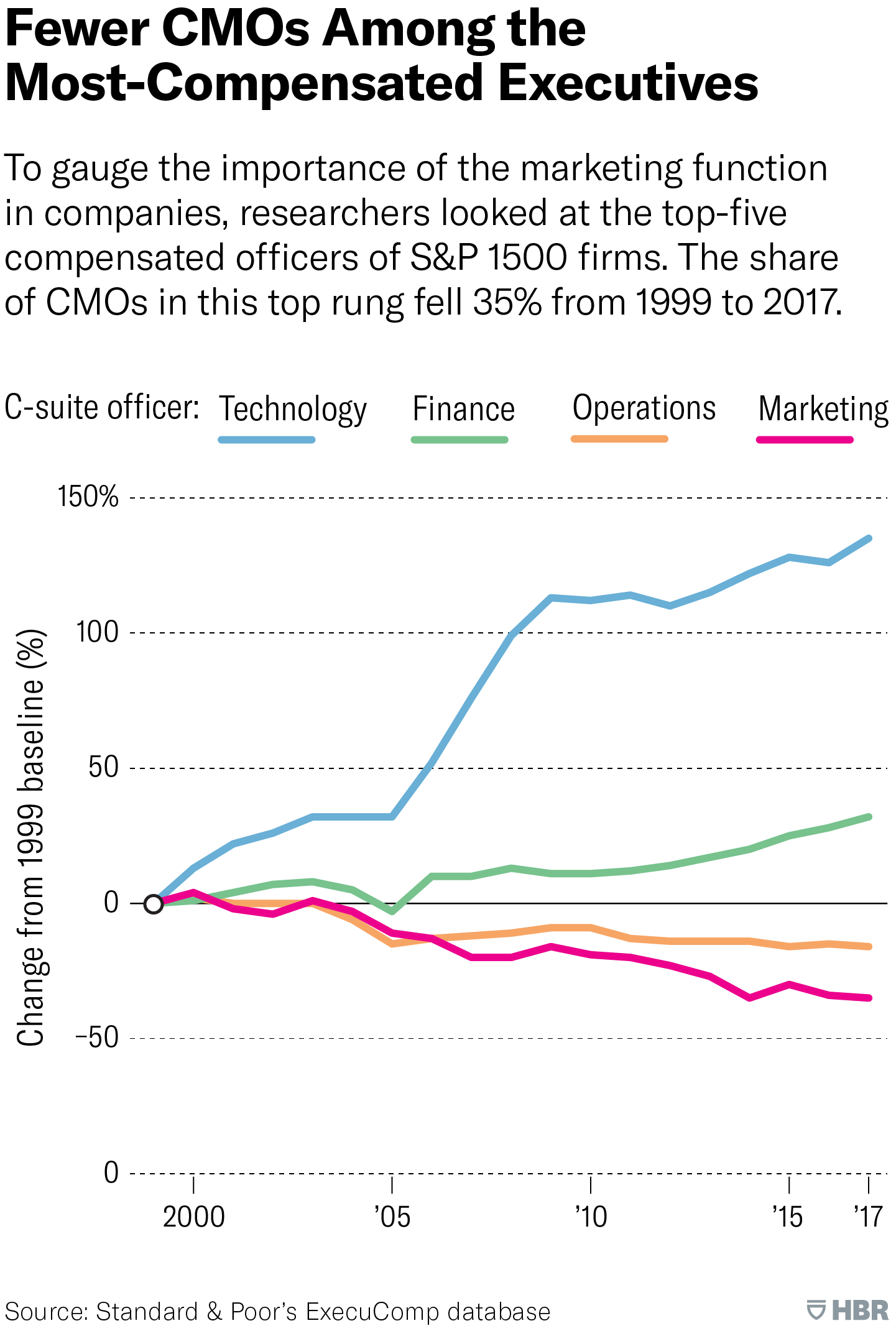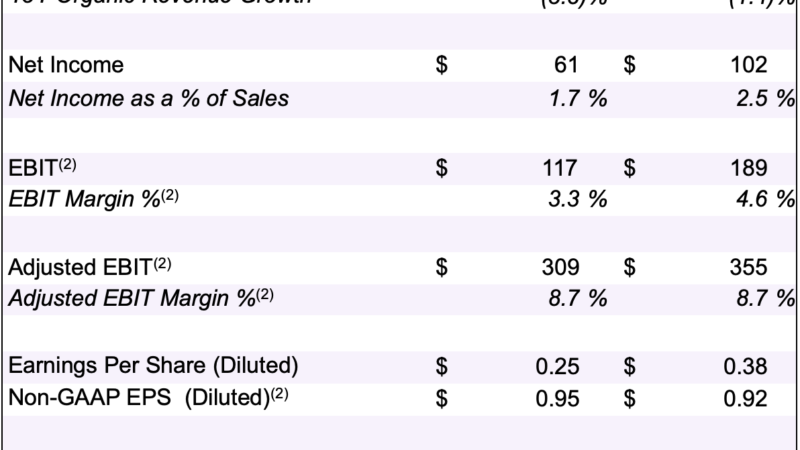Is Technology Subsuming Marketing? – Harvard Business Review
Executive Summary
Data suggests that the importance of marketing in organizational hierarchies has declined, especially compared to functions like engineering, technology, and innovation. The authors previously found that U.S. companies’ advertising expenditures decreased from 1% of total expenditures in 1975 to 0.8% in 2017. In new research, they looked at the top leadership of S&P 1500 firms, and found a dramatic decline in the number of chief marketing officers (CMOs) in the group of top five compensated officers of a firm from 1999 to 2017. Meanwhile, the number of officers representing information or technology in the top five highest-paid category increased.

Last year, we published an analysis showing that U.S. companies’ advertising expenditures decreased from 1% of total expenditures in 1975 to 0.8% in 2017. We concluded that the importance of marketing must have been reduced in the organizational hierarchy, especially compared to, say, engineering, technology, and innovation. (R&D expenditures increased from 1% to 8% in the same time frame.)
Many scholars and practitioners wrote to us arguing that marketing is much more than advertising spend. It was a fair point. Unfortunately, marketing expenses, as opposed to advertising outlays, are not typically disclosed by firms, making it hard to examine the importance of marketing over time based on reported expenditures.
So we turned to another data set: the top leadership of S&P 1500 firms. When we looked at the top five compensated officers of a firm between 1999 and 2017, we found a dramatic decline in the number of chief marketing officers (CMOs) in this top rung — about 35%. Meanwhile, the number of officers representing information or technology in the top five, highest-paid category increased, and now far exceeds the number of CMOs. Because compensation typically reflects an executive’s seniority in an organization, our data suggests that the importance of CMO in the organizational hierarchy has declined, which supports our earlier assessment that marketing as a function is less valued today than it once was.

We found several potential explanations for these trends. One is that the number of tech firms has increased over time, while the number of firms in other industries, such as retail and manufacturing, has declined. Both retail and manufacturing sell physical products and rely heavily on the traditional 4P marketing principles (product, price, promotion, and place).
Another explanation is that marketing itself has changed. Customers now spend an increasing percentage of their income on software-based services that are created, priced, and distributed over the internet. They also get more information about products and services from online sources — bloggers, online reviews, influencers — than from watching advertisements. Advertisements themselves are now instantaneously placed in browsers based on customer data. So the application of the 4Ps today requires more constant experimentation and dynamic decisions (not to mention algorithms, data scientists, econometricians, and big data experts), instead of the well-thought-out and stable policies that are recommended by extensive market research. As a result, IT must play an increasingly important role in marketing, and the importance of the person who looks at marketing from the technology lens must have increased over time. On the flip side, a marketing person who doesn’t understand technology must find it difficult to keep his or her job. One could even argue that marketing is getting merged into the IT function or outsourced to companies such as Google Marketing Platform.
Another explanation is that the technology-oriented founders do not fully appreciate the importance of marketing and underinvest in the function. Many of the leading brands today, such as Google, Microsoft, Amazon, and Facebook, were created by technology prowess. Compare this strategy to the advertising-based brand creation strategy of past successful brands such as Coca-Cola and Nike. It is noteworthy that among Apple, Microsoft, Google, Facebook, and Amazon, the top five most valuable brands identified by Forbes magazine, only Microsoft had a CMO that appears in the list of top five paid executives in 2017.
Yet another possibility is that firms increasingly acquire brands instead of developing them organically. This is evident from the increasing pace of mergers and acquisition transactions. Recall Microsoft’s acquisition of LinkedIn, Facebook’s acquisition of WhatsApp, and Google’s acquisition of YouTube, in multi-billion-dollar deals. This trend might explain the growing importance in the organizational hierarchy of the CFO, who negotiates the acquisition and the integration strategy of the target and arranges financing.
Whatever the definitive explanation, our findings indicate that the importance of CMOs in the organizational hierarchy has declined while that of CTOs has risen dramatically. Our findings should interest board of directors, CEOs, and IT, marketing, and human resources departments, as they consider their future staffing, compensation, and promotion policies. Perhaps it’s time to stop considering marketing and technology as two isolated departments and encourage closer collaborations between them.






